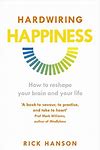Emotions consist of feelings and moods.
- Feelings – are specific, often fairly brief, and are cause by an inner or outer stimulant.
- A friend smiling at you makes you happy while her snippy comment irritates you a minute later.
- Moods – are more profuse, enduring, and independent of stimuli.
- Sadness is a feeling while depression is a mood
Feelings grow mood
- Repeatedly taking in feelings of gratitude and gladness will tend to develop a mood of contentment
- Also, moods grow feelings – a basic sense of contentment with life fosters feelings of thankfulness and joy.
Anecdotes for negative thoughts or impulses (addressing negative with positive feelings/thoughts)
- Address a sense of weakness with a sense of strength
- Address a sense of helplessness with experiences of feeling a “cause/purpose”
- Address feelings of alarm with feelings of protection, calm or safety
- Address a sense of anxiety, fear, or worry with experiences of re-assurance. Relaxation, or noticing you are alright right now.
- Address a sense of feeling contaminated with experiences of cleansing or sensing ways that your body and mind are healthy
- Address a sense of sensitivity with experiences of soothing of the senses
- Address Immobilization or freezing with physical activity or venting
- Address disappointment or sadness and loss with feelings of gratitude, gladness, beauty or gain
- Address a sense of frustration with feelings accomplishment or seeing goals attained
- Address a sense of failure can be addressed with feelings of success
- Address boredom with experiences of feeling the rich fullness of this moment
- Address feelings of being abandoned with experiences of feeling loved
- Address being ignored or misunderstood with feelings of being seen or feelings of empathy
- Address feeling left out or excluded with experiences of belonging or feeling wanted
- Address Inadequacy, shame or worthlessness with experiencing feeling recognized and appreciated
- Address loneliness with experience of friendship, being kind to others or kind to oneself
- Address resentment or anger with experiences of assertiveness, support from others, or self-compassion

Re-source: Recondition
Using negative as a starting point
- Be with what’s there.
- Step back and observe it.
- Decrease the negative
- Relax, let go of harmful thoughts
- Increasing the positive
Lingering chronic pain
- Pain becomes aggravated with the fear about it
- Focus not of the pain but when it was not in pain
- Feel the good
- Spend minutes acknowledging your good feelings
- feel the sense of warmth and light
- Like a warm liquid (melted chocolate)
- Letting it sink like putting oil (in every cell in your body)
- Make a kind of mental video of being and feeling alright.
- These hundreds of videos will become your expectation instead of a dreaded reality
“Being more flexible in your mind will allow you to be more flexible in your body!”
craving and resource from “Hardwiring Happiness” by Rick Hansen

